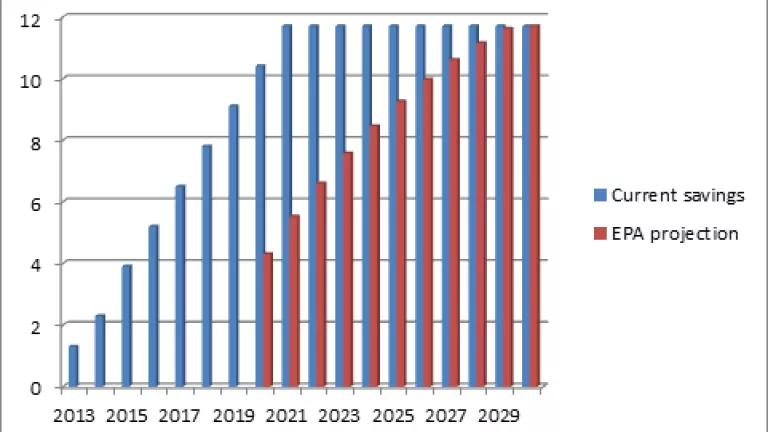
This Wednesday's Chicago Tribune editorial, entitled a Kick-Start to Clearing the Air, got a few things right, but a lot more wrong about U.S. EPA’s new proposal to limit the dangerous carbon pollution from power plant. Here’s a quick summary of what they got right, and where they went wrong.
Power plants are the single biggest source of carbon pollution in the U.S. While we already limit how much arsenic, mercury and soot power plants can dump into our air, there are no such limits for carbon pollution. It is time we change that.
As the recently published National Climate Assessment makes clear, climate change poses significant public health risks to Illinois and other Midwestern states. For example, rising temperatures will make ground level ozone or smog worse, which triggers asthma attacks and therefore threaten the health of the more than 1 million Illinoisans who suffer from asthma. This is just one reason why we have an obligation to protect ourselves and future generations from climate change.
The EPA’s proposal to reduce carbon emissions from the electric power sector represents an enormous opportunity for Illinois to create a more reliable, more affordable, cleaner electric system and our economy will be better for it. The Tribune is right that EPA has proposed a flexible system-wide approach, allowing each state including Illinois to come up with its own plan for complying, using home-grown clean energy resources—of which Illinois has in abundance. It’s also right that power plant emissions have been addressed successfully by EPA in other contexts including mercury and sulfur.
However, the Tribune gets it wrong that cleaning up carbon from power plants will hurt our economy. The authors may not have had enough time to delve into the proposal in depth, and so didn’t realize that Illinois is in great shape for meeting EPA’s emission goals, and could even get further reductions cost-effectively. The chart below shows in blue the level of energy efficiency savings we will achieve simply as a result of maintaining the same energy efficiency programs and savings currently being offered by Illinois utilities under current law. The red bars show what U.S. EPA assumed about energy efficiency’s contribution to meeting the Illinois target. The takeaway here is that Illinois will hit EPA’s 2020 projection in 2015, and that if we strengthen our energy efficiency programs we can get even deeper carbon reductions than EPA has proposed.
Illinois is ahead of the curve on renewable energy as well. This year Illinois will generate 9 million mwh of power from renewable energy projects. This is 85% of what EPA projects Illinois would be able to generate from renewables in 2020.
The more we rely on efficiency the more these rules will result in lower, not higher electric bills. In fact, if we ramp up energy efficiency beyond today’s levels, we can meet the EPA targets while lowering Illinois electric bills by $800 million per year, or about $5.80/month for each household. This is the part of your electric bill that pays you back in lower electric system costs and lower power bills.
Why will these rules result in more jobs for Illinois? Illinois already employs 96,000 people in the clean energy industry, and meeting these targets could put another 7200 Illinoisans to work designing, manufacturing and installing clean energy systems.
EPA developed its emission reduction target for Illinois assuming that we would also generate more power in natural gas plants, and encourages states to take steps to prevent early retirement of uneconomy nuclear plants. Clearly, unless we develop strong rules to ensure that fracking does not threaten our families and communities, ramping up reliance on gas is problematic, and lengthening the lives of aging reactors raises serious environmental and safety concerns. Over the next two years the state will consider all of the resource options we have, and make decisions based on cost, reliability, safety and environmental benefits. The best outcome will include the following steps --
- We should ramp up our energy efficiency investment to capture all cost-effective savings.
- The General Assembly must update and strengthen the Illinois renewable energy standard to build a strong clean energy sector that can make Illinois competitive in the region and the nation.
- Illinois DNR must finalize fracking rules, and continue working to ensure that our families and communities are protected from the impacts of natural gas extraction.
We look forward to working with the state agencies to develop the best energy plan for Illinois.